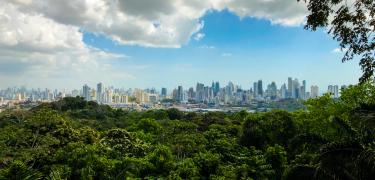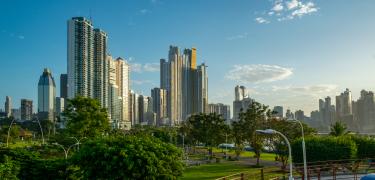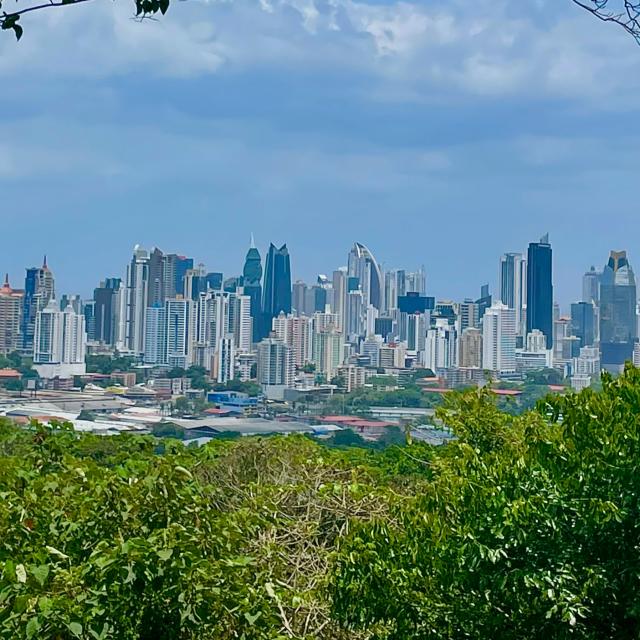Surrounded by National Parks and green lungs, Panama City offers the perfect contrast between modernity and wild nature.
Without straying too far from your hotel, historical sites, or delightful restaurants, you can hike in the middle of the tropical forest and get to know the greenest side of the capital. Get ready to discover 11 amazing trails in Panama City.
1. Momotides Trail: The Jungle at Your Fingertips
- Place: Metropolitan Natural Park.
- Distance: 0.62 miles (1 km).
- Difficulty: Low.
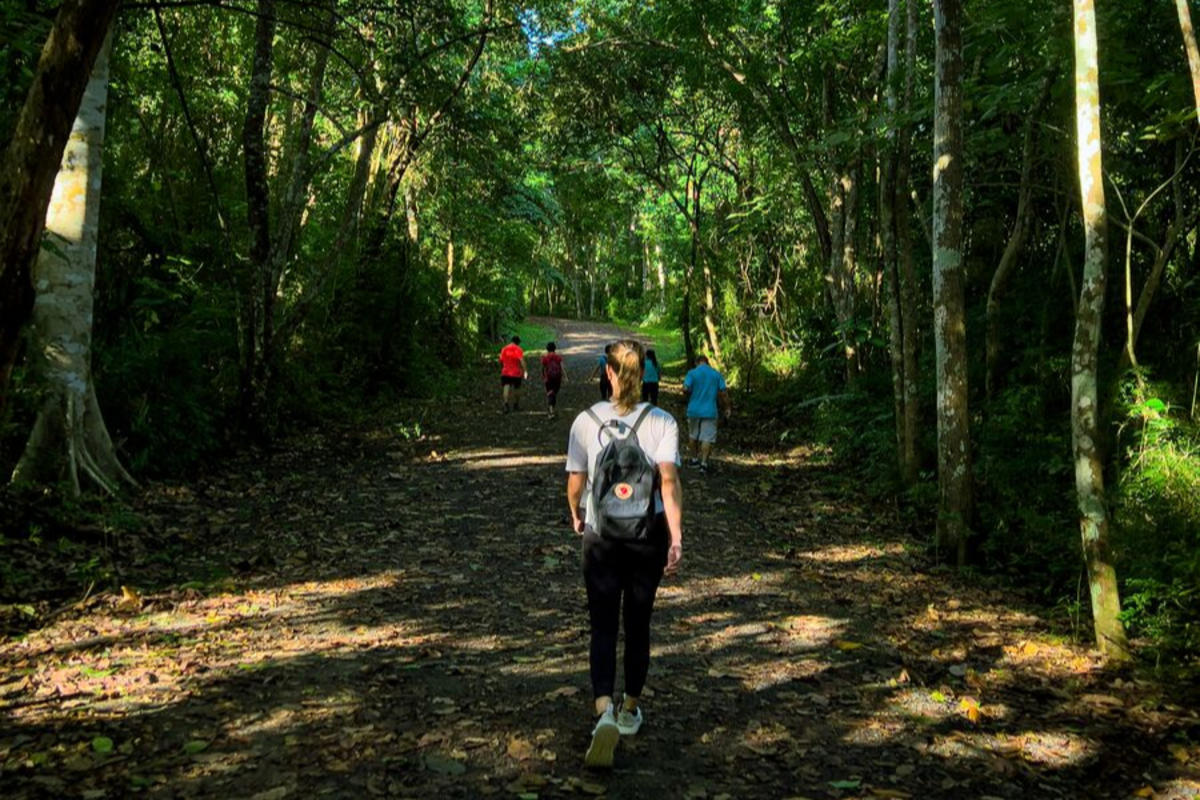
This is a family-friendly trail in the middle of the rainforest. The trail is relatively flat and easily accessible. On the tour, you'll be able to see animals such as the titi monkey, the Central American agouti, squirrels, butterflies and many more.
Look out for the screeching motmot (Momotus subrufescens), the bird that gives the trail its name, and many other species of birds that fly around here.
Tip
This trail is well marked, so you can do it on your own or have a park guide, who will take your experience to another level.
The Metropolitan Natural Park is open daily from 7:00 a.m. to 4:30 p.m.
2. Los Caobos - El Roble Circuit: in the Middle of Giants
- Place: Metropolitan Natural Park.
- Distance: 0.9 miles (1.45 km).
- Difficulty: Moderate.
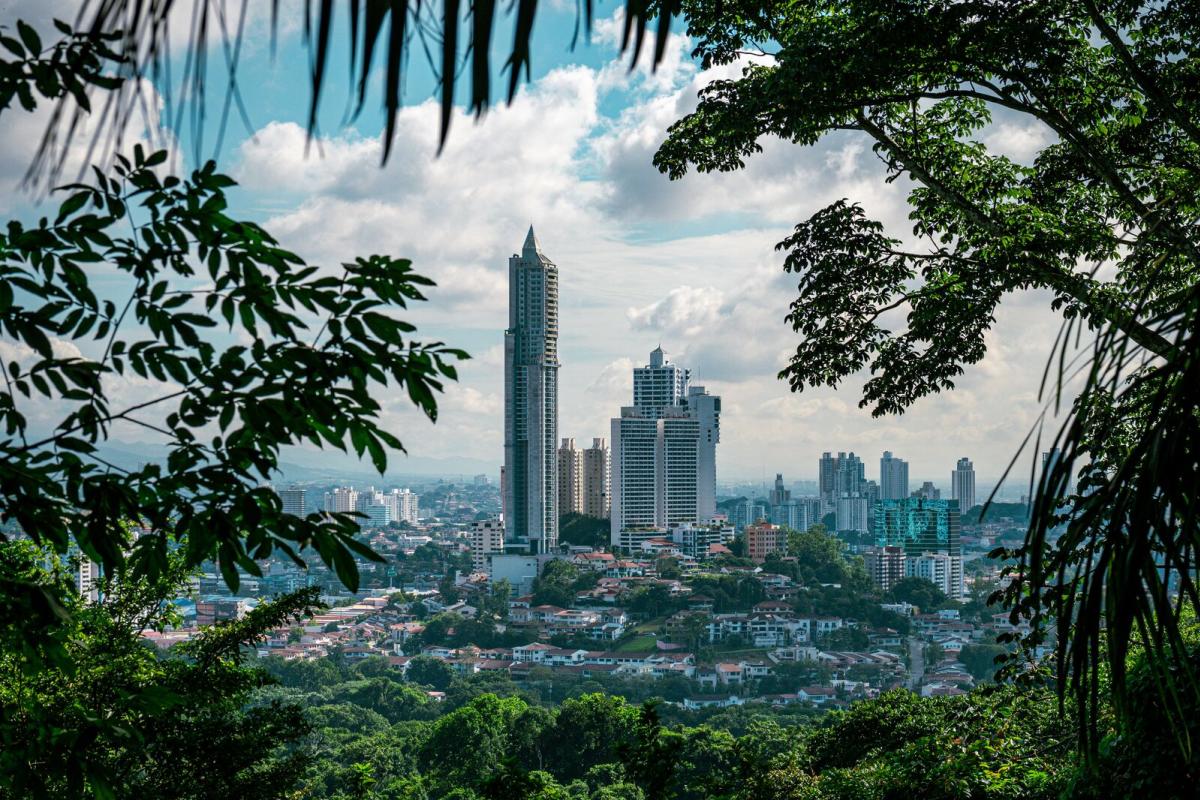
This circuit is made up of two trails that you can do in a single day or, if you prefer, choose just one of the two.
Start the circuit from the visitor center along the Los Caobos trail, named after the large mahogany tree, that you'll find along the way. The trail is a total of 0.56 miles (0.9 km) and takes you to a viewpoint from where you can see the city framed by a green environment. One of the favorite sights of those who visit the park!
Follow the trail 0.43 miles (0.7 km) further until you find the intersection of the El Roble trail. There you can decide to go back or complete the circuit. In this part of the tour, you'll see much more fauna and flora, and you'll pass by the Jicotea lagoon, which is home to turtles, carp fish and other animals.
Tip
To do the circuit or either of the two trails, keep in mind that the park is open daily from 7:00 a.m. to 4:30 p.m. and prices range approximately from $0.50 to $4.
3. La Cienaguita Trail - Mono Titi Trail and Cerro Cedro: 360º Viewpoint
- Place: Metropolitan Natural Park.
- Distance: 1.74 miles (2.8 km).
- Difficulty: Moderate.
This circuit goes a little deeper into the forest and includes the ascent to Cerro Cedro, from where you'll have a 360º view of the city and its most important points.
Start this circuit on the La Cienaguita trail, with a climb of 0.68 miles (1.1 km), where you'll see a denser forest, huge trees and lots of flora and fauna. The trail ends at the intersection with the Mono Titi Trail. At this point, you can choose to climb Cerro Cedro, the highest point in the park, at 511.81 feet (156 meters) above sea level, where you can take incredible photos of the city.
Continue along the Mono Titi Trail in search of these small and curious monkeys, to the Los Trinos viewpoint. From this viewpoint, you'll be able to see into the depths of the forest, the perfect time to go birdwatching and to encounter some mammals in the area.
Tip
Don't get too close to the animals and don't try to feed them. Remember that this is wildlife and they should not be disturbed.
4. Cerro Ancon Trail: The Iconic
- Place: Township of Ancon.
- Distance: 2 km (1.24 miles)
- Difficulty: Low.
Cerro Ancon is a very important symbol for the country's sovereignty. At the top of this iconic point of the city stands a huge Panamanian flag, visible from different places in the capital.
This 393 ft (120 m) climb is made over a wide concrete road that circles the hill to its summit. Cerro Ancon is part of a municipal circuit of protected areas, which seeks to conserve the forests of the areas near the Canal. On your way, you'll be able to see 260 species of plants and some of the 70 species of wild animals that have been recorded in the area. Try to look for a sloth or a family of Central American agoutis or monkeys. If you go in the early morning hours, you might encounter deer and armadillos, listen to the singing of hundreds of birds and enjoy the flight of colorful butterflies.
At the top of Cerro Ancon, you'll be able to take beautiful photos of the city from different angles. Look from above for Casco Antiguo, the modern city, the ruins of Panama Viejo, the famous Panama Railway, and the port of Balboa.
5. Pipeline Road
- Place: Soberania National Park.
- Distance: 14.29 miles (23 km).
- Difficulty: Low to high.
This trail is known as the jewel of the park.. Up to 525 species of birds have been seen there in a single day. The trail is quite long and partly covered by the dense jungle bordering it. It is for this reason that most people choose to hike short stretches in the most common areas.
Some of these zones are the lagoon area, Pipeline In and Pipeline Out. There you can see howler, white-faced, capuchin and titi monkeys, as well as anteaters, capybaras, red-tailed squirrels, sloths and many more animals.
Tip
There are many tour operators that include parts of the pipeline trail in their bird watching plans. With their advice, you'll be able to choose the part of the trail that works best for you, from a beginner level, without the need for too much physical effort, or sign up for a much more demanding adventure.
6. Panama Rainforest Discovery Center: From the top
- Place: Soberania National Park.
- Distance: 175 steps.
- Difficulty: Moderate.

This trek is a little different, as it's not a trail per se. It's about climbing the immense tower of 175 steps, to reach an incredible place for bird watching.
From the top of the tower, look for species such as different types of herons, great kiskadee (Pitangus sulphuratus), purple coots (Porphyrula martinica) and red-fronted coots (Porphyrula chloropus).
If you prefer not to climb, from the bottom of the tower, on the shelf and in the area feeders, you can see up to 8 species of hummingbirds. Try to find at least one specimen of the long-billed hermit (Phaethornis longirostris), white-necked jacobin (Florisuga mellivora), rufous-crested coquette (Lophornis delattrei), white-vented plumeleteer (Chalybura buffonii), blue-chested hummingbird (Amazilia amabilis), snowy-bellied hummingbird (Amazilia Edward) and rufous-tailed hummingbird (Amazilia tzacatl).
7. Plantation Trail: A Path That Will Make you Fall in Love
- Place: Soberania National Park.
- Distance: 4 miles (6.5 km).
- Difficulty: Low to moderate.
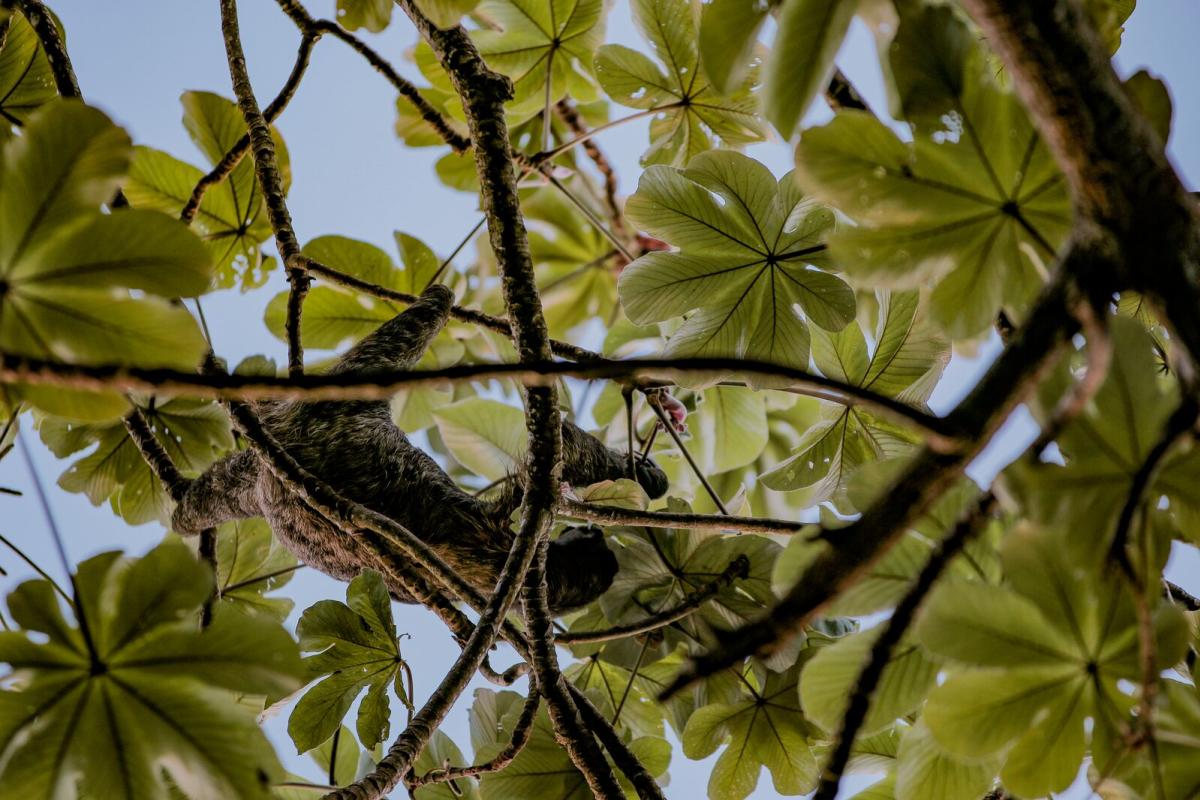
On this trail, you'll hike through a mature, open forest, ideal for finding local mammals or birds of many species. The hike is quiet, as the trail has only a slight slope. In addition, the path follows a very beautiful stream that will lead you to waterfalls in the middle of a natural landscape.
Tip
For those who want to have a more extreme adventure, this path joins the Camino de Cruces Trail, and you can do a much longer trek. It is advisable to hike with a guide who knows the route and teaches you about the flora and fauna that they encounter along the way.
8. Camino de Cruces Trail: History and Nature
- Place: Soberania National Park.
- Distance: 6.71 miles (10.8 km).
- Difficulty: Moderate.
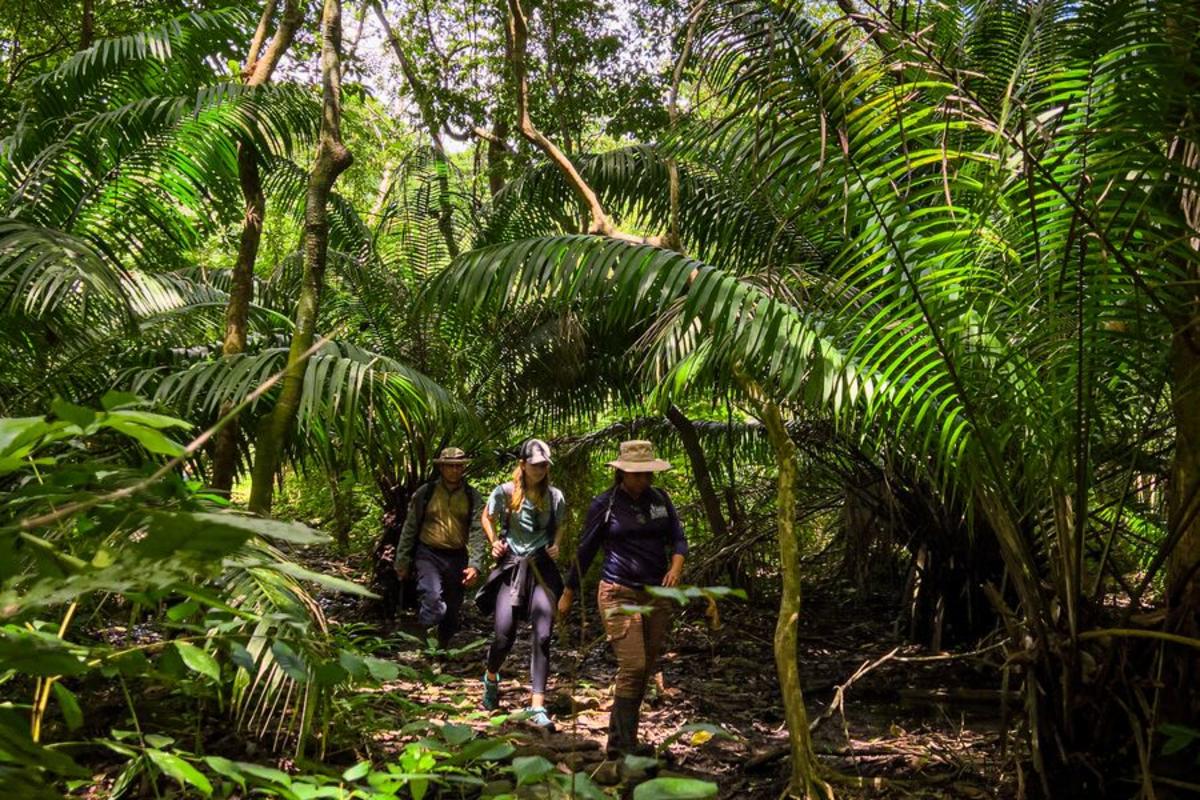
This trail follows one of the oldest trade routes in Panamá. On the few stretches of original path, you'll walk through the middle of the natural forest full of life. During the tour you must cross several streams. Depending on the time of year you cross, the water will be up to your ankle or calf, but it won't rise above that point.
The first half of the trail is quite uneven, while in the second part you'll have fewer steep descents and climbs. When you're halfway through the route, at 2.54 miles (4.1 km), you'll reach the intersection with the Plantation Trail. At this point, you can decide to go back along the Plantation Trail, go back the way you came or continue to the end, where the trail meets the Chagres River.
Tip
This is a trail without proper signs. It's better to take it with a guide, especially if you want to go all the way to the end.
If your plan is to get to the Chagres River, you must make a prior arrangement with a boatman to wait for you at the end of the trail and get you back on the road. If you want to combine this tour with the Plantation Trail, the guide will be in charge of organizing how to get back to the starting point.
The best time to visit this route is from December to March, as it rains less and the trail is friendlier.
9. El Charco: For the Whole Family
- Place: Soberania National Park.
- Distance: 0.50 miles (0.8 km).
- Difficulty: Low.
The nicest thing about this trip is that it has a picnic area in front of a beautiful waterfall and a very fresh water well. El Charco is a trail that is divided into two: the short path and the complete circuit. The short path is about 200 meters long from the entrance checkpoint to the well. It's a destination for the whole family and even those with reduced mobility.
The long circuit, 0.50 miles (0.8 km), is also very easy to do. The path borders the Sardinilla River, has a small climb and passes through a few suspension bridges that make the experience very fun. The trail, in the middle of the tropical forest, gives you the opportunity to meet different animals along the way, especially howler monkeys, single cats, sloths, anteaters and Central American agoutis. You can also see toucans, woodpeckers, iguanas, and blue morpho butterflies, among many other species.
Tip
The rainy season is the best time to go. Choose the time very well between the months of March and December, since you'll have “El Charco” and the waterfall in their maximum splendor and you'll even be able to bathe. Take advantage and bring your picnic basket to have a different afternoon, and always remember to leave everything as you found it.
10. Trail to Cerro Jefe: On the Clouds
- Place: Chagres National Park, Cerro Azul.
- Distance: 8,69 miles (14 km).
- Difficulty: Low to moderate.
This trail crosses a dwarf forest and cloud-covered hills in the coolest and highest area near the city. When you reach the top of Cerro Jefe you'll be at 3,303 feet (1,007 meters) above sea level. From this height, you'll have an incredible view of the Panama Canal to take the best photos.
In this park, 114 species of mammals such as tapir, white-tailed deer, spider monkey and five species of large cats have been recorded. In addition, there are about 396 species of birds and 96 species of reptiles.
Tip
Remember that you're in one of the coolest areas near the capital. Mornings are the best time to start your hike, as they are clearer. In the afternoon, the fog falls, and it gets colder. We recommend you bring a light coat and, of course, go with a guide.
11. Rainforest and Chagres River: Encountering the Origins
- Place: Chagres National Park, Embera community.
- Distance: 0.93 miles (1.5 km).
- Difficulty: Moderate.
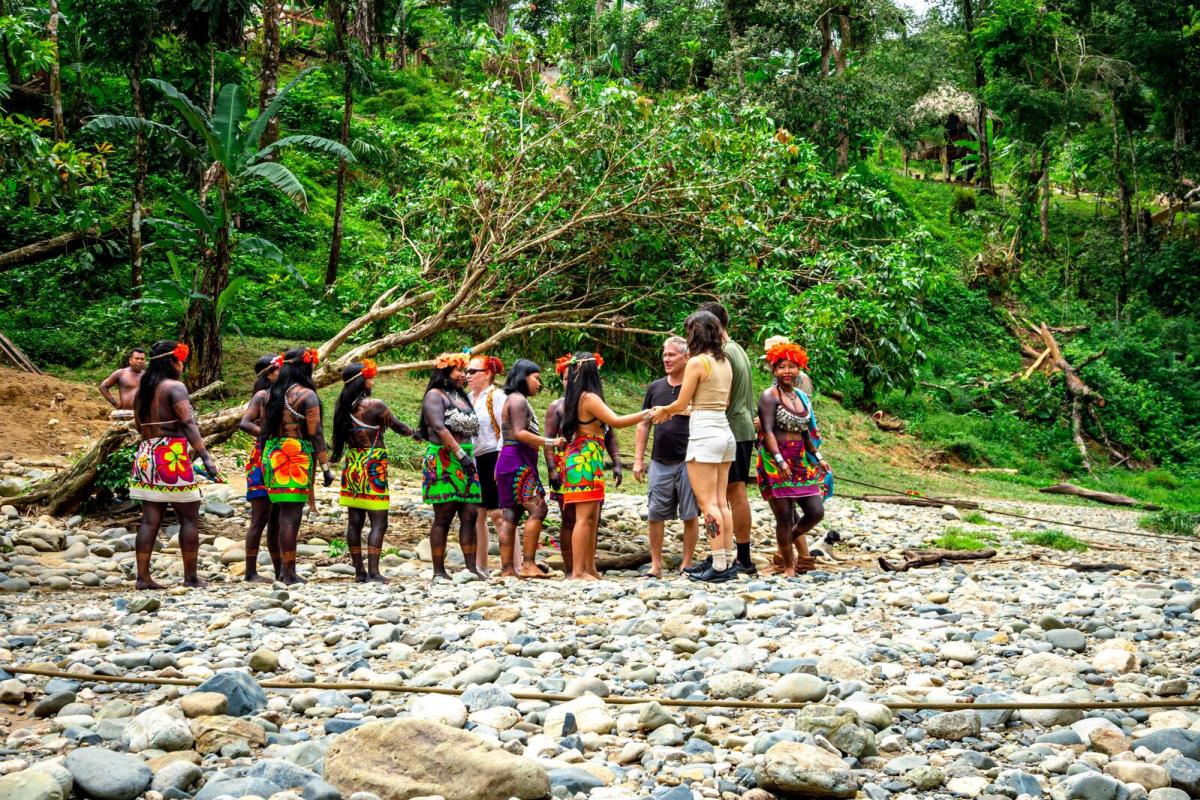
The best way to explore this park is with its native villages. Take a day trip with the Embera community to get to know their environment and culture in depth.
The tour includes a traditional canoe ride on the Chagres, then you'll take a walk of about 30 minutes to a waterfall. Here you can bathe in the middle of nature. You'll then go to the community center, where you'll be given a talk about Emberas history and traditions. You'll see their traditional dances, be offered lunch and be able to see and buy their traditional handicrafts.
Tip
The entire tour has an average cost of $119 and lasts approximately 7 hours. Bring comfortable clothes, a bathing suit, and clothes to change.. But keep in mind that the waterfall doesn't have dressing rooms.

